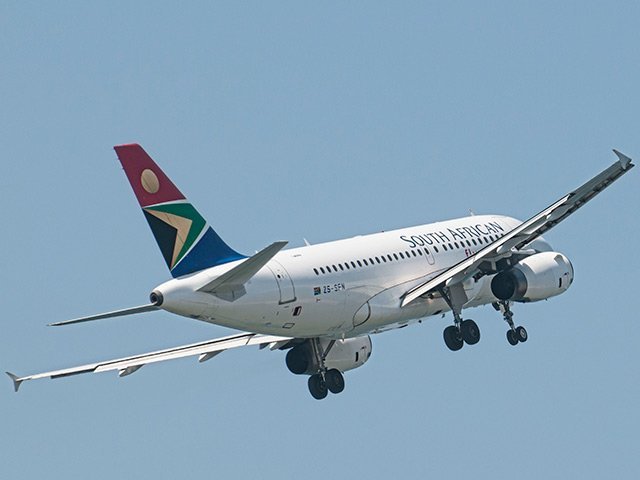Flag airline South Africa Airlines (SAA) has once again fallen into the spotlight due to a significant accounting error that wiped out profits reported in fiscal year 2023/24. On July 17, 2025, the state-run airline, which celebrated its return to profitability after a decade of loss, announced that its audited financial results revealed a loss of R354 million. The contradictions resulting from the R431 million accounting failure raised questions about the airline's financial governance and the sustainability of its turnaround strategy.
A blow to the SAA recovery story
The journey from the brink of SAA's collapse to profitability has been the basis for public narratives since it emerged from business rescue in April 2021. The airline, which had not made a profit since 2012, reported its net income for fiscal year 2022/23. This achievement was particularly noteworthy given the disrupted history of the SAA, characterized by years of mismanagement, corruption allegations and dependence on government relief totaling over R500 billion between 2007 and 2022.
However, the latest financial results, released 10 months late, unraveled the story. According to a report from BusinessTech, the airline's pre-audited financial statements misrecognized the profits of R431 million by recognizing the credit obligations of business rescue and recording the amount as miscellaneous goods revenue. The external auditor flagged this as a previous period adjustment and forced the SAA to redefine the outcome. The amendment transformed a conservative R600,000 profit to a loss of R371 million, which was later reported to be further adjusted at R354 million.
Accounting error: deeper appearance
The accounting error was attributed to a misclassification of funds related to the SAA's business rescue process and ended in 2021 after nearly two years of administration. During this period, the airline received a dramatic restructuring, reducing its fleet from 44 to 6 aircraft, reducing staff and refocusing on operations on high-effective African routes. The R431 million in question was initially treated as revenue, inflated the airline's financial performance. However, the auditor determined that it should be considered as an adjustment to the previous period and effectively erased the reported benefits.
Aviation analyst Guy Leitch, editor of SA Flyer Magazine, described the error as a symptom of a deeper problem in SAA's financial reporting. “In many cases, profit is an accounting concept, and SAA history suggests that such figures can be misleading without a strict audit.”
Delay in the publication of financial statements for 2023/24 – Skepticism has become complicated when scheduled to take place in September 2024. SAA has struggled with timely financial reporting since 2018, and audits for the 2019-2022 period have recently been completed. The Auditor's Office has previously criticized the financial statements for the lack of reliability of the SAA. This was repeated at a 2024 Congressional hearing, when concerns about governance and transparency were raised.
The future impact of SAA
Accounting errors are at a critical time for SAAs. SAA is actively pursuing expansions to regain its status as a major African airline. Since reopening in September 2021, the airline has doubled its fleet to 18 aircraft and expanded its network to 16 routes, including long-haul flights to Sao Paulo and Perth, Brazil. SAA leadership outlined plans to increase the fleet by an additional 30% and double the route network within 18 months, focusing on connectivity within Africa to boost trade and tourism.
However, repeated losses raise concerns about the airline's ability to fund this ambitious growth without external support. The proposed privatization agreement with Takatso Consortium collapsed in March 2024, with Saa completely falling to the state. Airlines are currently in debt and are meeting their estate obligations, but their reliance on operational cash flow makes them vulnerable to financial failure.
Transport Minister Barbara Creecy, who defended the SAA turnaround, admitted the set-off, but highlighted the wider advancements in the airline. “The error is unfortunate, but it does not deny the operational efficiency achieved,” Creecy said in a statement. She said SAA revenues rose 183% to R5.7 billion in 2022/23, and according to Oxford Economics Africa, the airline's contribution to South Africa's GDP is projected to triple by 2030.
The broader issue context
SAA's anguish is not unique in the African aviation sector. In the African aviation sector, operational costs, currency devaluation and inconsistent regulatory frameworks pose major hurdles. Competitors like Ethiopian airlines thrive by leveraging hub status and operational efficiency, but SAA continues to tackle the legacy of mismanagement and political interference. The airline's pilot union is also threatening a strike against the proposed 30% wage rise.
Accounting errors also rekindle the scrutiny of SAA governance. The Auditor's 2024 report highlighted the “red flag” in the airline's financial process, but no clear evidence of fraud was identified. Critics, including the Tax Abuse Rescission Organization (OUTA), have long criticized the SAA for its opaque financial practices. This gained traction during the tenure of former board president Dudu Myeni, who was declared director postponed to 2020 with a loss of R16.8 billion for the airline between 2012 and 2017.


